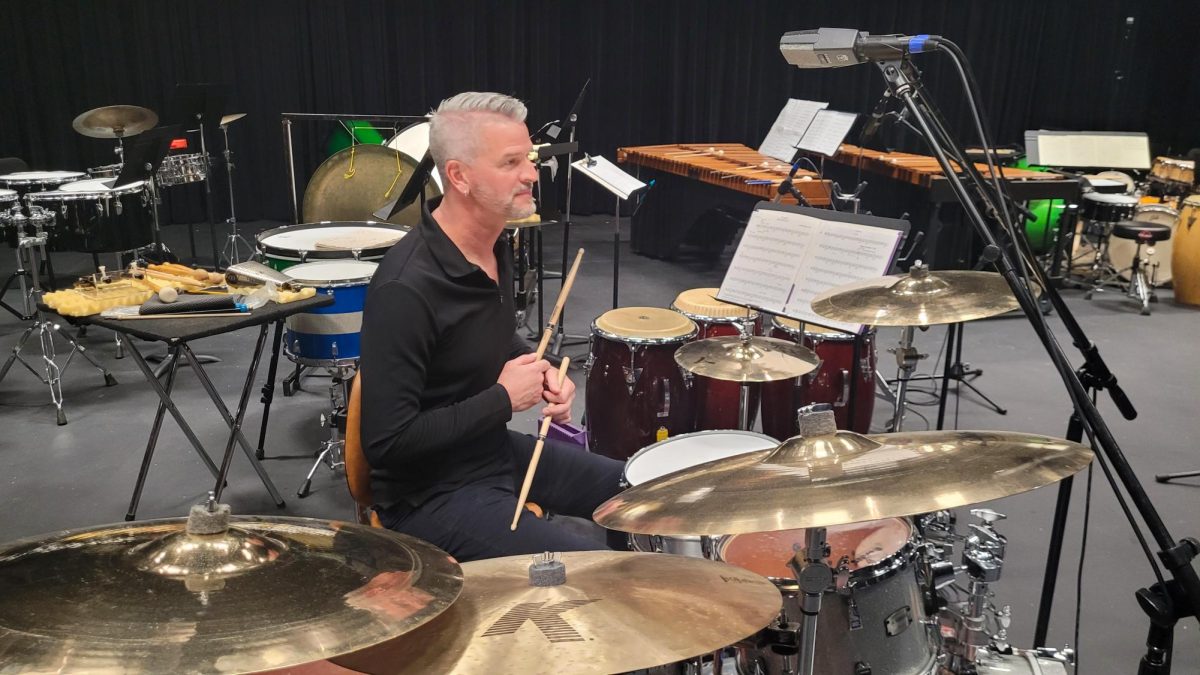Take time to be amazed by life
On Monday night, three friends and I set out on what at first felt like a wild goose chase. We were driving north on a lonely country road, seeking an area dark enough to be able to view the Northern Lights.
We had no idea what we were looking for.
After we pulled over to the side of the road in confusion, a truck heading toward us slowed to a stop beside us.
“Looking for the Northern Lights?” the driver asked. We nodded like lost children at the service desk of a grocery store.
“You’re looking at them,” he said, and told us that if we got out of the car and let our eyes adjust to the darkness, we would see the colorful haze that arched across the night sky.
Our helpful friend drove off, and we stepped out of the car to behold a sight none of us had ever seen before.
I may be a bit naive, but I had no idea that the Northern Lights were sometimes visible in the sky above Charleston. I thought I’d have to venture up to Alaska to see such a thing.
What my friends and I saw was breathtaking. In the distance and far up in the black sky, a fuzzy green haze stretched from the East to the West, blurring out the stars, and ended in a patch of red that reached up until it faded out of view.
The sky being red and green at 10 p.m. was astonishing to me. I’ve seen sunsets and sunrises, blue skies and black, but red and green hours after the sun went down? That was awesome.
When I say awesome here, I don’t mean awesome like class is canceled or awesome like the seventh-grade synonym for cool. The sight was full of awe. I was speechless as my eyes drank it in. The Northern Lights have a very clear scientific explanation. The Web site www.pfrr.alaska.edu summarizes the phenomenon, also called “the aurora.” “Auroras occur because Earth’s magnetic field interacts with the solar wind, a tenuous mix of charged particles blowing away from the sun … Auroral light is from the the air glowing as charged particles, particularly electrons, rain down along Earth’s magnetic field lines. The color of the aurora depends on the type of atom or molecule struck by the charged particles.”
Got all that? The explanation is interesting to me, but if someone had busted all that information out while I was standing wide-eyed soaking up the beauty of the aurora that night, the wonder of the scene would have been spoiled.
The problem with scientific explanations, and with society as a whole sometimes, is there is an answer for everything.
We, as people, want everything to fit into a box, neat little categories and we are uncomfortable when something can’t be explained.
I think largely, we have lost our sense of wonder and mystery. We can’t look at things the way a five-year-old looks at a sparkler on the Fourth of July.
When you think about the logistics of birth, birth is not beautiful. It’s actually one of the most grotesque processes of nature in existence. Birth’s scientific explanation cannot capture the overwhelming wonder of a new life entering the world.
Tears are simply drops of water that flow out of ducts near eyeballs. Nothing earth-shattering. But what on the inside causes them to flow can’t be tagged with a textbook explanation. Tears are wonderful.
But we can’t seem to embrace things that are mysterious. We try to trap the mind-blowing workings of God in a test tube, and it’s breaking us. I’m not trying to say science is worthless. Not at all. I just want us to accept that at a certain point, answers run out, and instead of being frustrated by that, I think we should rejoice in being amazed.
We are becoming grown-ups, but let’s not lose the ability to stare at the Northern Lights, or even the moon, through the simple and unquestioning eyes of a child.
n Erika Larson is a senior English major and a monthly columnist for The Daily Eastern News. Her e-mail address is eslarson@eiu.edu. Columns are the opinion of the author.






![[THUMBNAIL EDITION] (From left to right) Head football coach Chris Wilkerson works with his son student assistant coach Peyton Wilkerson at football practice at O'Brien Field on the Eastern Illinois University campus on Thursday.](https://www.dailyeasternnews.com/wp-content/uploads/2025/04/FB_25_O-1-e1744234837107-1200x596.jpg)




![[Thumbnail Edition] Charleston High School sophomore Railyn Cox pitches the ball during Charleston's 8-7 win over Flora High School on Monday, March 31.](https://www.dailyeasternnews.com/wp-content/uploads/2025/04/SBHS_01_O-1-e1743982413843-1200x1023.jpg)



![[Thumbnail Edition] Senior Foward Macy McGlone, getsw the ball and gets the point during the first half of the game aginst Western Illinois University,, Eastern Illinois University Lost to Western Illinois University Thursday March 6 20205, 78-75 EIU lost making it the end of their season](https://www.dailyeasternnews.com/wp-content/uploads/2025/03/WBB_OVC_03_O-1-e1743361637111-1200x614.jpg)




















![[Thumbnail Edition] Eastern Illinois softball senior infielder Briana Gonzalez resetting in the batter's box after a pitch at Williams Field during Eastern’s first game against Southeast Missouri State as Eastern split the games as Eastern lost the first game 3-0 and won the second 8-5 on March 28.](https://www.dailyeasternnews.com/wp-content/uploads/2025/04/SBSEMO_11_O-1-e1743993806746-1200x692.jpg)

















![The Weeklings lead guitarist John Merjave [Left] and guitarist Bob Burger [Right] perform "I Am the Walrus" at The Weeklings Beatles Bash concert in the Dvorak Concert Hall on Saturday.](https://www.dailyeasternnews.com/wp-content/uploads/2025/03/WL_01_O-1200x900.jpg)











